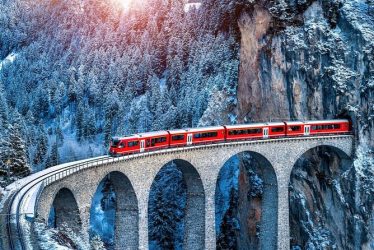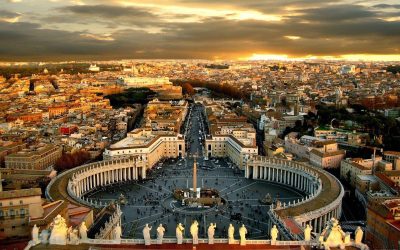Nestled high in the Peruvian Andes, Machu Picchu is a breathtaking testament to the ingenuity of the Inca civilization. Built in the 15th century and later abandoned, this UNESCO World Heritage Site continues to captivate millions of visitors with its mystique and architectural brilliance.
Perched at an altitude of 2,430 meters (7,970 feet), Machu Picchu overlooks the Urubamba River Valley. Its terraces, temples, and plazas are ingeniously designed to harmonize with the surrounding rugged landscape, blending human achievement with natural beauty. The site remains an enigma—its purpose is still debated, with theories ranging from a royal estate to a religious retreat.
Getting to Machu Picchu is an adventure in itself. Many opt for the Inca Trail, a four-day trek through stunning mountain scenery, while others take a scenic train ride to the nearby town of Aguas Calientes.
A visit to Machu Picchu is a journey through history, culture, and wonder—a bucket-list experience like no other.
Why Visit Machu Picchu?

Machu Picchu, the “Lost City of the Incas,” is a must-visit destination for history enthusiasts, nature lovers, and adventure seekers alike. Perched high in the Andes Mountains of Peru, this ancient site showcases the incredible ingenuity of the Inca civilization through its stunning stone structures, terraces, and intricate water systems.
The site offers breathtaking views of lush valleys and misty peaks, creating an otherworldly experience. A UNESCO World Heritage Site, Machu Picchu also holds deep cultural and spiritual significance, making it a place of reverence and inspiration.
Getting there is part of the adventure, with options ranging from the iconic Inca Trail trek to a scenic train ride through the Sacred Valley. Whether you’re drawn by its rich history, awe-inspiring beauty, or the thrill of exploration, visiting Machu Picchu is an unforgettable journey that connects you to one of the world’s greatest wonders.
Machu Picchu is one of the world’s most dreamed-about destinations. Mystery is at the center of Machu Picchu’s appeal, as the city holds many secrets about the ancient Incan Empire. Knowledge-seekers will find plenty of interesting tidbits to mull over about the city’s archaeological significance and the various scientific and religious practices of the Incans who built the magnificent site.
Best Time to Visit Machu Picchu

The best time to visit Machu Picchu depends on your preferences for weather and crowd levels. Generally, the dry season, from May to September, is the most popular time. During these months, the skies are clearer, providing stunning views of the Andes Mountains and the archaeological site. However, this is also the busiest period, with more visitors flocking to the site.
For fewer crowds and a more serene experience, consider visiting during the shoulder months of April or October. The weather is still pleasant, with occasional light rains, but the scenery remains lush and vibrant.
Avoid the peak rainy season from November to March, as trails can be slippery, and visibility might be reduced. However, the landscape is at its greenest, offering a unique and tranquil atmosphere.
How to Get to Machu Picchu

Getting to Machu Picchu involves a scenic and adventurous journey. Most visitors start in Cusco, traveling by train to Aguas Calientes, the town at the base of the site. Trains, like PeruRail and IncaRail, offer picturesque rides through the Sacred Valley.
For the more adventurous, hiking the Inca Trail is a popular choice. This four-day trek takes you through stunning landscapes and ancient Inca ruins, ending at the Sun Gate of Machu Picchu.
Once in Aguas Calientes, a 30-minute bus ride or a steep hike leads to the entrance. Whether you prefer comfort or adventure, getting to Machu Picchu is an unforgettable part of the experience.
Top Attractions in Machu picchu
The Intihuatana Stone

“Hitching Post of the Sun,” is one of Machu Picchu’s most iconic and mysterious features. This intricately carved granite stone was used by the Inca to track the sun’s movements and mark seasonal changes, serving as both an astronomical tool and a ceremonial object.
Positioned on a high platform overlooking the ruins, it aligns perfectly with the sun during equinoxes, casting minimal shadows. This precision highlights the Inca’s advanced understanding of astronomy. Unlike similar stones destroyed by Spanish conquistadors, the Intihuatana survived due to Machu Picchu’s hidden location, preserving its historical and cultural significance.
The Temple of the Three Windows

The Temple of the Three Windows is a stunning structure in Machu Picchu’s Sacred Plaza, showcasing the Inca’s advanced architectural skills and spiritual beliefs. Built with precisely cut granite stones, the temple features three large trapezoidal windows that overlook the valley below.
These windows are thought to symbolize the three realms of Inca mythology: the sky (Hanan Pacha), the earth (Kay Pacha), and the underworld (Ukhu Pacha). The temple likely served as a ceremonial site for important rituals. Its breathtaking design and alignment with the natural surroundings reflect the Inca’s deep connection to their environment and mastery of engineering.
The Machu Picchu Museum

officially known as the Manuel Chávez Ballón Museum, is located near Aguas Calientes and offers a fascinating introduction to the history and significance of Machu Picchu. It houses artifacts uncovered during excavations, including pottery, tools, and metalwork, showcasing the daily life and advanced craftsmanship of the Inca civilization.
The museum also features detailed exhibits on the site’s discovery by Hiram Bingham in 1911 and the Inca’s ingenious engineering techniques, such as their terracing and water systems. Surrounded by lush gardens, the museum provides an enriching experience for visitors, complementing their exploration of the ancient citadel.
The agricultural terraces

The agricultural terraces of Machu Picchu are an engineering marvel, showcasing the Inca’s ingenuity and mastery of sustainable farming. These stone-lined terraces were designed to prevent erosion while maximizing arable land in the steep mountain terrain. The terraces allowed the cultivation of crops like maize and potatoes, crucial to the Inca diet.
Their layered structure also helped regulate water flow, preventing landslides and ensuring efficient irrigation. Beyond their practical purpose, the terraces added to the site’s beauty, blending seamlessly with the natural environment. The agricultural terraces are a testament to the Inca’s ability to adapt to and thrive in challenging landscapes.
how to book the tickets in Machu Picchu

Booking tickets for Machu Picchu is essential for visiting the iconic site, as entry is regulated to protect its integrity. The most reliable way to book is through the official website: www.machupicchu.gob.pe, where you can purchase tickets for various options, including access to the main ruins or additional hikes like Huayna Picchu or Machu Picchu Mountain. Tickets are available for specific time slots, so be sure to choose a morning or afternoon entry based on your preference.
If you’re traveling from Cusco, you can also purchase tickets through trusted travel agencies or tour operators, who may offer packages that include guided tours and transportation. In person, tickets can be purchased in Aguas Calientes or Cusco, but availability is limited, especially during peak seasons. It’s recommended to book well in advance to ensure you get the date and time you want.
Cusco

“Cusco” is a historic city in southern Peru, once the capital of the Inca Empire and a UNESCO World Heritage site. Known as the “Gateway to Machu Picchu,” Cusco is rich in culture, history, and stunning architecture. The city’s cobblestone streets are lined with colonial-era buildings, and remnants of Inca structures like the **Qorikancha (Temple of the Sun)** and **Sacsayhuamán** are scattered throughout.
Aguas Calientes

also known as Machu Picchu Pueblo, is a small town in Peru located at the base of the famous Machu Picchu archaeological site. It serves as the main gateway for tourists visiting the ancient Incan citadel. The town is known for its hot springs, scenic surroundings, and vibrant atmosphere filled with restaurants, markets, and hotels catering to travelers.
Accommodation in Machu Picchu

Accommodation near Machu Picchu is primarily located in Aguas Calientes, the town at the base of the mountain. This area offers a variety of lodging options, ranging from budget hostels to luxurious hotels. Popular choices include Tierra Viva Machu Picchu, Sumaq Machu Picchu Hotel, and Belmond Sanctuary Lodge, which is the closest to the site, offering exclusive comfort and convenience. For more affordable options, there are several guesthouses and hostels offering basic amenities.
Some travelers choose to stay in Ollantaytambo, a town in the Sacred Valley, and take a morning train to Machu Picchu. It’s important to book accommodations in advance, especially during peak tourist seasons, as Aguas Calientes can get crowded.
Useful Travel Tips for Visiting Machu Picchu

Book Tickets in Advance – Machu Picchu has limited daily visitors, so secure your entrance tickets and train tickets months ahead, especially during peak season (May–September).
Choose the Right Time – The dry season (April–October) offers clearer views, while the wet season (November–March) has fewer crowds but more rain.
Acclimate to Altitude – Spend a few days in Cusco or the Sacred Valley to adjust to the high altitude before heading to Machu Picchu.
Pack Wisely – Bring comfortable shoes, a rain jacket, sunscreen, insect repellent, and plenty of water.
Arrive Early – Early morning visits offer fewer crowds and magical sunrise views.
Respect the Rules – Follow site regulations, avoid touching ruins, and stay on marked paths to preserve the site.
Hire a Guide – A local guide can provide insightful details about the history and significance of the ruins.

Frequently Ask Questions
Machu Picchu is one of the Seven Wonders of the World for its remarkable Inca engineering, breathtaking mountain location, and cultural significance. Built in the 15th century, it showcases advanced stonework, blends harmoniously with nature, and offers insight into Inca civilization. Its historical mystery captivates millions worldwide.
Machu Picchu is a mystery because its original purpose and the reasons for its construction and abandonment are still unclear. Scholars debate whether it was a royal estate, a religious sanctuary, or an astronomical observatory. Its remote location, advanced engineering, and survival through centuries add to its enigmatic allure.
Machu Picchu is man-made, constructed by the Inca civilization with remarkable stone structures and terraces. It is located on a natural mountain ridge, blending seamlessly with the surrounding landscape. This unique combination of human ingenuity and natural beauty makes it a significant historical and cultural site, celebrated for its harmony with the environment.
The primary language spoken in Machu Picchu is Quechua, an indigenous language of the Andean region. However, due to its popularity as a tourist destination, English is commonly spoken and understood, particularly among the local guides and staff. English signage and informational materials are also available to assist visitors in navigating and understanding the site.

Owen Samuel is a Destination Manager based in California, known for his expertise in creating unforgettable travel experiences. With a deep passion for tourism and local culture, he helps travelers discover the best places around the world.












